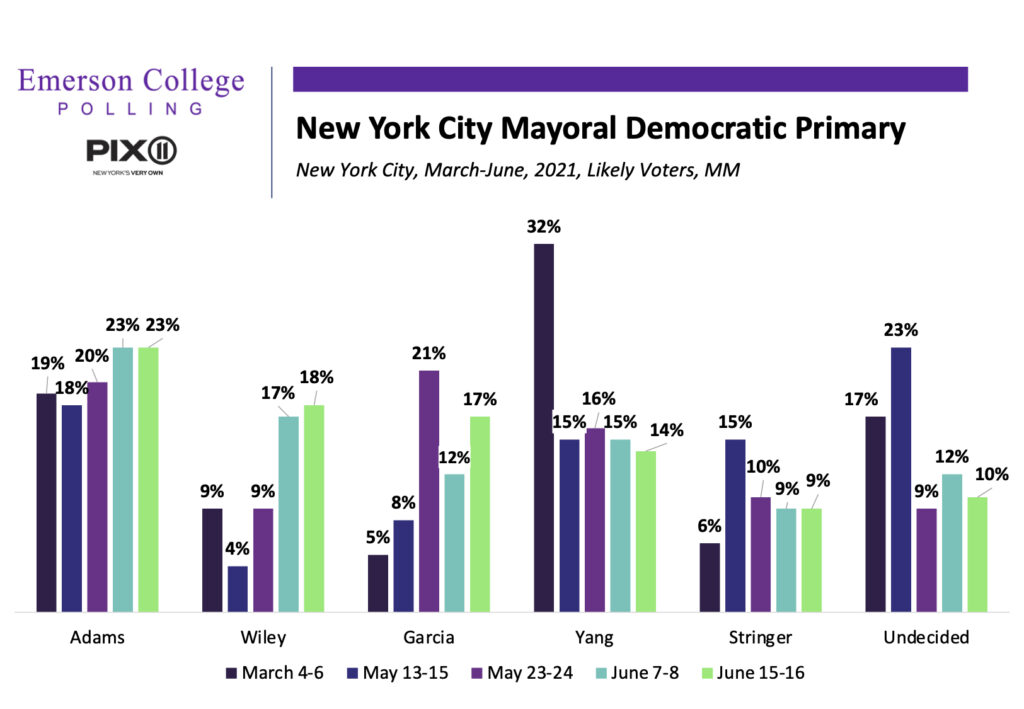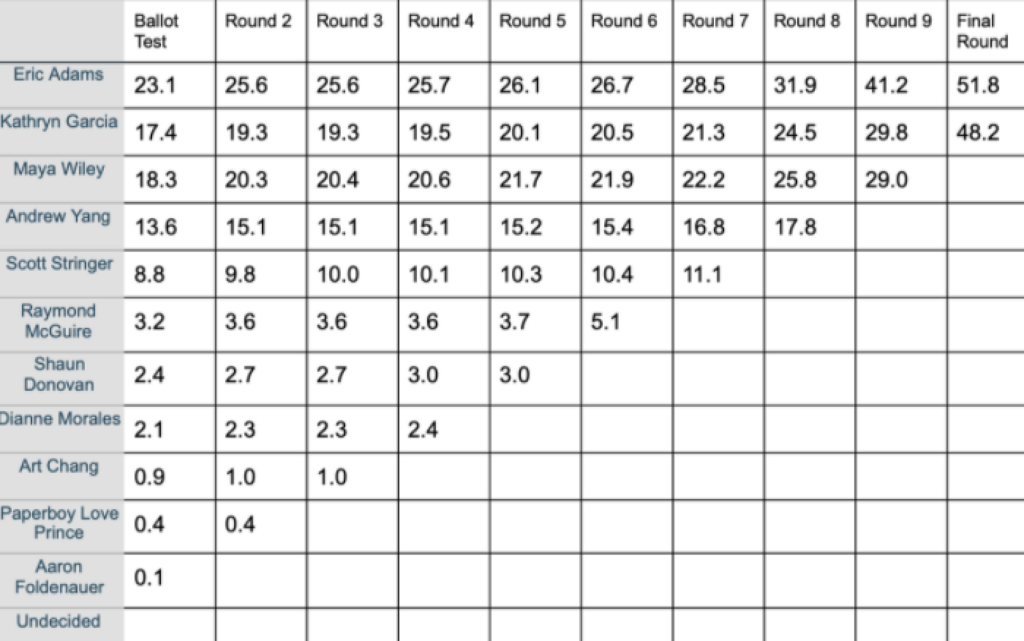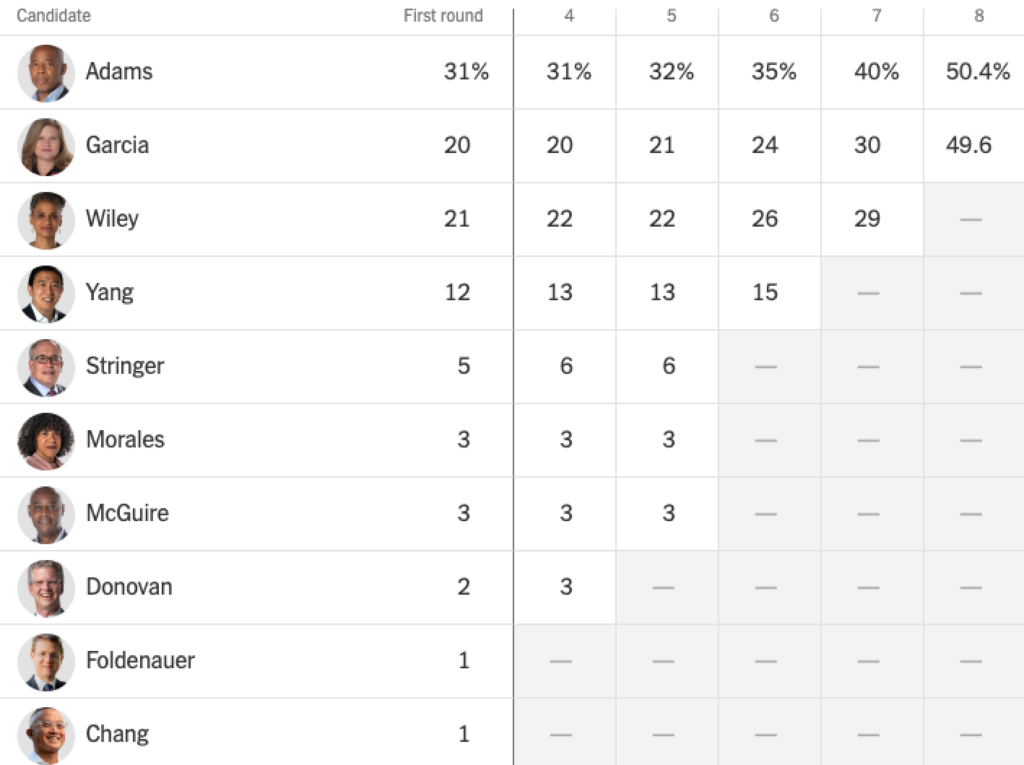Emerson Polling Learns From Ranked-Choice Voting in NYC Mayoral Race
Like the polls they conduct, Emerson Polling is always changing and adapting to current events.
Take the New York City mayoral Democratic primary, which gave the Big Apple its first bite at ranked-choice voting.
“That New York City mayoral race was an opportunity to showcase the innovation of Emerson Polling and the future of polling,” said Spencer Kimball, associate professor and director of Emerson Polling. “The New York Times recognized that very few pollsters were going to take on the challenge of ranked-choice voting. We took on that challenge and were able to show that polling is able to represent the electorate in ranked-choice voting.”
Emerson Polling took on that assignment thanks to its partnership with WPIX, which came about via their continued relationship with Dan Salamone ’87, director of local content development at Nexstar Media.

In particular, Emerson Polling saw the power of Congresswoman Alexandria Ocasio-Cortez’s (D-NY 14th) endorsement.
“You saw it in the numbers. [Kathryn] Garcia was just pulling into contention with [Eric] Adams in that race,” said Kimball. “Then AOC endorsed [Maya] Wiley, and Wiley jumped up 8 percent and Garcia fell back. They were fighting for second and Adams was able to hold on for victory.”


Isabel Holloway, Emerson Polling Center program assistant, said Emerson polls showed why Adams won.
“We found the number one issue to be crime, and that’s why we thought Adams was in a strong position as people were jockeying,” said Holloway. “When we asked what candidate would handle crime the best, Adams got the majority among all voters, even those who were not voting for him.”
Holloway said some pollsters might have been unsure about taking on ranked-choice voting elections, as the question design process is different. But ranked-choice voting isn’t going away, said Kimball.
“It’s not just New York City. It’s in Maine, St. Louis, and in Washington. Ranked-choice voting is a popular and growing way of running elections. We have to start learning how to do this type of polling and not just dismiss it as a novelty,” said Kimball.
“It appears we should expect more states to adopt ranked choice voting; it almost passed in Massachusetts last year. We got the opportunity in 2018 to do surveys in Maine’s Second District [which had ranked-choice voting] and could see how a candidate would lead in the beginning, and how votes would splinter.”
Another big takeaway from New York’s mayoral race was the unexpected record-high turnout. Kimball attributed that to recent expansion of voting rights. Allowing mail-in ballots, early voting, or municipalities mailing ballots to all voters allows more people to vote, particularly young people and people of color.
As the Times article pointed out, Emerson Polling utilizes innovative methods such as text messaging to conduct polls. Some traditional pollsters are critical of new methodologies, but have acknowledged that Emerson is to be taken seriously in the field of pre-election polling, Kimball said.
He said they are working on a study about their use of text messaging by utilizing a database of 20,000 respondents from the 2020 election cycle.
“We were learning on the spot in 2019 and 2020 about how text messaging works [in conducting polls],” said Kimball. “We see benefits and limitations. We now have one additional tool at our disposal for data collection, which makes us the most comprehensive sample design in public opinion polling. It is our goal to give everyone in the population a chance to be represented in our surveys.”
And no matter how many tools pollsters have, polling is not perfect.
“We must remember that poll results are a range of scores,” said Kimball. “Everyone is to blame for the misperception of polls. Generally speaking, when polls are published, the margin of error is not given enough attention [in small print and out of main view], like it’s a surgeon general warning for smoking. Polling is not an exact score and we use it that way. We are stepping in to improve polling literacy and explain that there is a margin of error and polling reflects a range of numbers.”
After the New York mayoral race, Emerson Polling has focused on polling the Buffalo mayoral race with WIVB. In this race, the incumbent mayor lost the primary and is mounting a write-in campaign, presenting yet another challenge and opportunity for Emerson Polling to use unique methodologies.
Categories